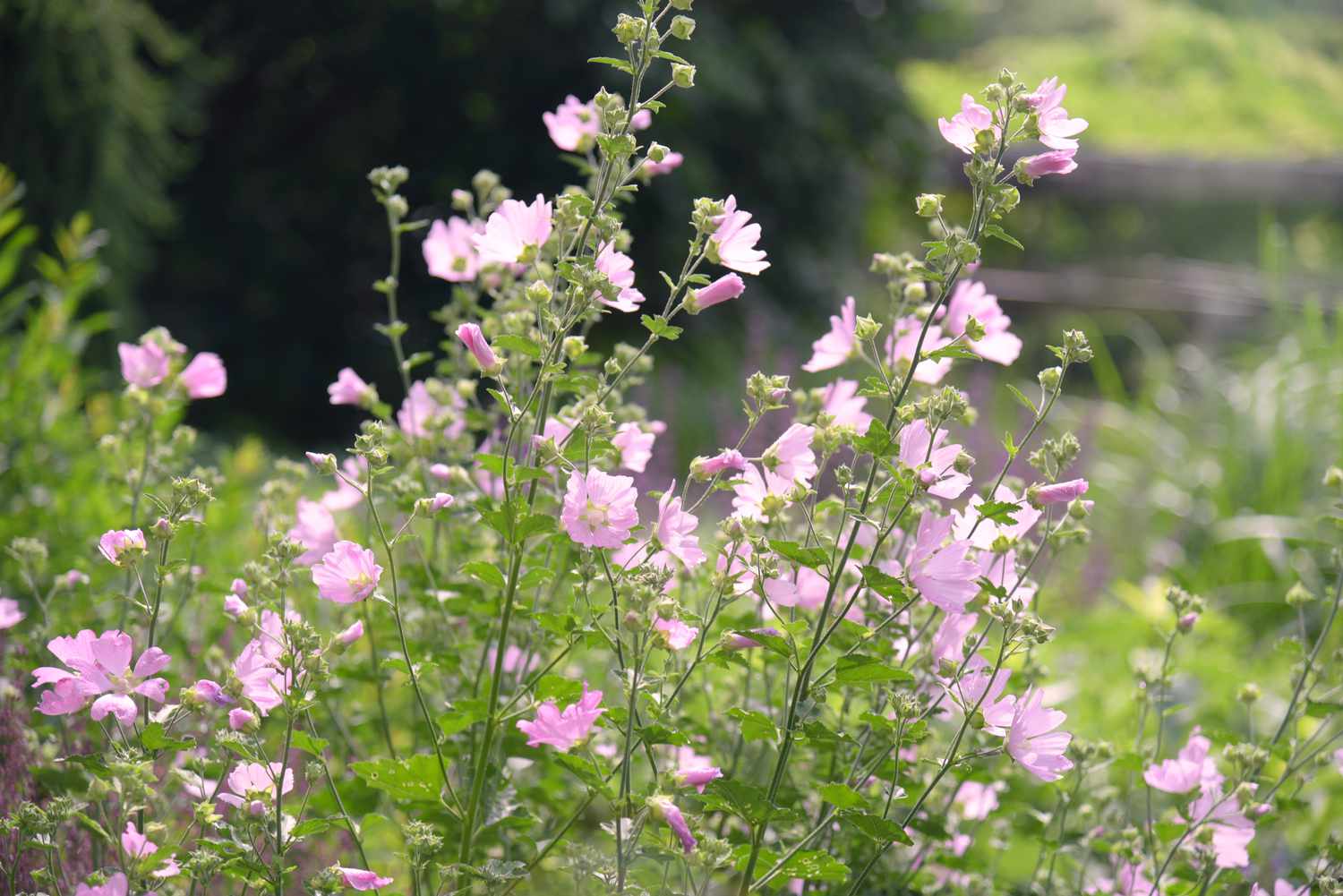
Hollyhock Mallow, also known as Malva Alcea, is a fascinating and enigmatic plant that captures the attention of garden enthusiasts and botany lovers alike. With its tall, stately stalks adorned with colorful blossoms, the Hollyhock Mallow adds beauty and charm to any landscape. But there’s more to this plant than meets the eye.
In this article, we will uncover 9 intriguing facts about Hollyhock Mallow that will leave you amazed and inspired. From its historical significance to its medicinal properties, this remarkable plant has much to offer. So, buckle up and get ready to delve into the world of Hollyhock Mallow and discover the secrets it holds.
Key Takeaways:
- Hollyhock Mallow, also known as Alcea rosea, has a captivating history, eye-catching blossoms, and attracts pollinators, making it a valuable addition to any garden.
- With its self-seeding ability and cultural significance, Hollyhock Mallow is not only beautiful but also easy to grow and has medicinal uses.
Fascinating History
Hollyhock Mallow, scientifically known as Alcea rosea, has a rich and fascinating history. It is believed to have originated in Asia and was introduced to Europe during the medieval period. The plant’s striking beauty and versatility quickly made it a favorite among gardeners and horticulturists.
Eye-Catching Blossoms
One of the most captivating features of the Hollyhock Mallow is its vibrant blossoms. The flowers come in a wide range of colors, including shades of pink, purple, red, yellow, and white. Their tall spikes and large petals create a stunning display in any garden or landscape.
Attracts Pollinators
The Hollyhock Mallow is a favorite among pollinators, such as bees and butterflies. Its nectar-rich flowers serve as a valuable food source, attracting these beneficial insects to your garden. By planting Hollyhock Mallow, you can contribute to the health and well-being of the local ecosystem.
Medicinal Uses
Throughout history, various parts of the Hollyhock Mallow have been used for medicinal purposes. The root of the plant has been traditionally used to soothe respiratory ailments, while the leaves were used to alleviate inflammation and promote wound healing. However, it’s important to consult with a healthcare professional before using any plant for medicinal purposes.
Cultural Significance
Hollyhock Mallow holds cultural significance in different parts of the world. In Japanese culture, the flower symbolizes ambition and growth, often associated with the samurai warrior class. In Europe, it has been used as a symbol of fertility and protection.
Drought-Tolerant
Hollyhock Mallow is known for its ability to thrive in dry conditions. It is a drought-tolerant plant that can withstand periods of limited water availability, making it an excellent choice for gardens in arid regions.
Easy to Grow
Whether you are an experienced gardener or a beginner, Hollyhock Mallow is relatively easy to grow. It can thrive in a variety of soil types and prefers full sun or light shade. With proper care and maintenance, you can enjoy the beauty of this plant in your own garden.
Biennial Blooms
Hollyhock Mallow is a biennial plant, meaning it completes its lifecycle over the course of two years. In the first year, the plant produces leaves and establishes its root system. In the second year, it sends up tall flowering spikes, creating a stunning display of blooms.
Self-Seeding Ability
The Hollyhock Mallow has a unique ability to self-seed. After the flowers have finished blooming, the plant produces seed pods that contain numerous seeds. These seeds can drop to the ground and germinate, allowing new plants to grow without human intervention.
In conclusion, Hollyhock Mallow is a fascinating and versatile plant with a rich history and a wide range of uses. Whether you appreciate its beauty, attract pollinators, or explore its medicinal properties, this plant is sure to add a touch of enchantment to your garden.
Conclusion
In conclusion, Hollyhock Mallow is a captivating and versatile plant that brings beauty and charm to any garden or landscape. From its impressive height to its vibrant blooms, there is so much to admire about this enigmatic plant. Whether you are a gardening enthusiast or simply appreciate the wonders of nature, Hollyhock Mallow is definitely a plant worth exploring. With its rich history, medicinal properties, and ability to attract pollinators, it is no wonder that Hollyhock Mallow continues to captivate and intrigue plant lovers around the world. So, why not add a touch of mystery and elegance to your garden by planting Hollyhock Mallow? You won’t be disappointed!
FAQs
1. How tall does Hollyhock Mallow grow?
Hollyhock Mallow can reach impressive heights of up to 6 feet (1.8 meters) or more.
2. What colors do Hollyhock Mallow flowers come in?
Hollyhock Mallow flowers come in a variety of colors, including shades of pink, purple, white, and even black.
3. Is Hollyhock Mallow a perennial or an annual plant?
Hollyhock Mallow is a perennial plant, meaning it typically lives for more than two years.
4. Can Hollyhock Mallow tolerate different soil types?
Yes, Hollyhock Mallow is relatively tolerant of various soil types, including clay and loam, as long as the soil is well-drained.
5. When is the best time to plant Hollyhock Mallow?
The best time to plant Hollyhock Mallow is in the spring, after the last frost has passed.
6. Does Hollyhock Mallow require a lot of sunlight?
Yes, Hollyhock Mallow thrives in full sunlight and requires at least 6-8 hours of direct sunlight per day.
7. Does Hollyhock Mallow attract pollinators?
Yes, Hollyhock Mallow is known to attract bees, butterflies, and hummingbirds, making it a great addition to any pollinator-friendly garden.
8. Can Hollyhock Mallow be grown in containers?
Yes, Hollyhock Mallow can be grown in containers, but it is important to choose a large pot to accommodate its height and provide proper drainage.
9. Is Hollyhock Mallow deer-resistant?
Hollyhock Mallow is relatively deer-resistant, although hungry deer may still occasionally nibble on the leaves.
Hollyhock Mallow's enigmatic nature doesn't end here. Dive into more captivating facts about gardens, uncover the fascinating world of pollinators, and explore the allure of Fatsia Japonica, a stunning ornamental plant. Each topic offers a unique perspective on the wonders of nature, from the beauty of well-tended gardens to the critical role of pollinators in our ecosystem. Immerse yourself in the intriguing world of plants and discover the secrets they hold.
Was this page helpful?
Our commitment to delivering trustworthy and engaging content is at the heart of what we do. Each fact on our site is contributed by real users like you, bringing a wealth of diverse insights and information. To ensure the highest standards of accuracy and reliability, our dedicated editors meticulously review each submission. This process guarantees that the facts we share are not only fascinating but also credible. Trust in our commitment to quality and authenticity as you explore and learn with us.


